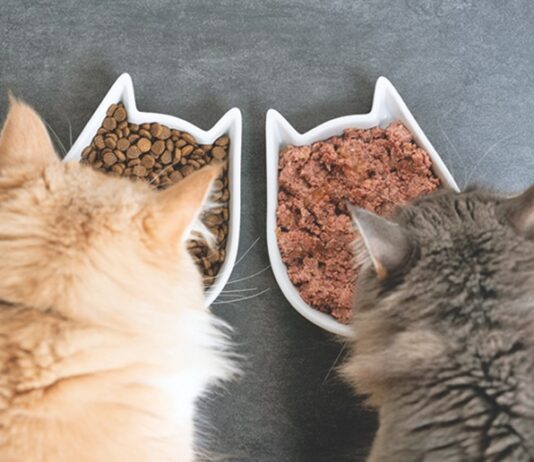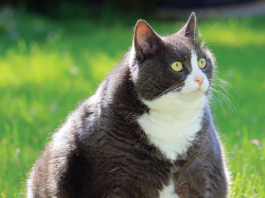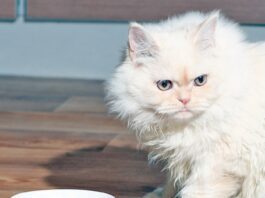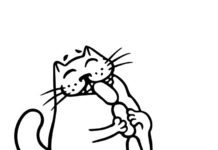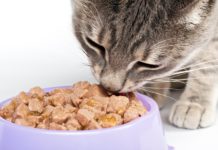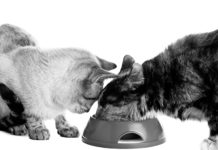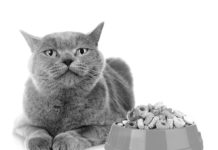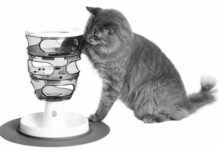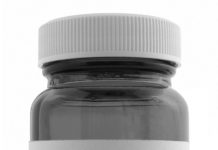Considering a Raw Diet?
As cats are obligate carnivores, a raw meat-based diet sounds like the perfect option. Unfortunately, that natural diet also comes with some all-natural risks, including parasites and bacteria, such as Salmonella.
Five Reasons Cats Are Natural Carnivores
These points come to us from the Baker Institute of Health at the Cornell University College of Veterinary Medicine
Pet-Food Environmental Impact
With the American trend to consume less meat-which helps reduce the environmental effect of meat production-UCLA professor Gregory Okin began to wonder what the impact of our pets was. It turns out that U.S. cats and dogs cause 25 to 30 percent of the environmental impact of meat consumption in the United States.
Senior Cats Need Your Attention
Were fortunate that many cats live well into their teens or even to 20 years of age or more. We generally define senior cats as any cat over 10 years of age. Geriatric cats can remain active and comfortable, but they are prone to certain health conditions. Being aware of these problems, reacting right away to changes, and providing recommended preventive care can all help keep your cat well into her later years.
PumpkinA Food For All Reasons
Pumpkin is an excellent source of potassiuma mineral that is important for a variety of physiologic functions.
Calories, Carbs, and Ingredients in Grain-Free Diets
On average, the grain-free diets were lower in carbohydrates than the diets that contained grain, but there was a wide range in carb content across all of the foods. This means that if your cat needs a diet with fewer carbs, choosing a grain-free diet does not guarantee that the carbohydrate content will be lower than the food you are currently feeding.
Pumpkin-A Food For All Reasons
Pumpkin is an excellent source of potassium-a mineral that is important for a variety of physiologic functions.
How to Handle a Finicky Eater
Some cats are just naturally picky and like to have variety in their diet, but changes in eating habits can also be a sign of stress or major illness.
Study Finds Higher Risk of Diabetes in Dry Food
The debate over whether dry cat foods high carbohydate count causes diabetes continues. In the latest development, a study at the Swedish University of Agricultural Sciences found an increased risk of diabetes mellitus (Type 2) - which resembles the same type found in people - in normal-weight cats on dry food.
Food Puzzles for Cats; Going to the Vet
In advocating environmental enrichment for indoor-only cats, it calls food puzzles foraging devices. The journal warns that, if not managed appropriately, indoor life can contribute to health problems such as obesity and diabetes, and problem behaviors such as house-soiling and attention seeking. Nutrition is the most pressing subject that cat owners want to discuss with the veterinarian, but the same survey, conducted at the end of summer, found that 60 percent of owners dont regularly take their cat to the veterinarian.
Are Probiotics Right for Your Cat?
Your cats gastrointestinal tract, like yours, is home to billions of bacteria. A healthy GI tract allows the absorption of food, while excluding toxins and disease-producing organisms. Yet malfunctions can sometimes occur. Perhaps your cat slipped outside and ingested a mouse or bird containing parasites that can cause vomiting and diarrhea.
Cornell Scientist to Study Commercial Raw Meat Diets
The Food and Drug Administration has awarded Anil Thachil, BVsc, Ph.D., in the Department of Population Medicine and Diagnostic Sciences at Cornell University College of Veterinary Medicine a grant to investigate the quality of commercial raw meat diets for pets.

